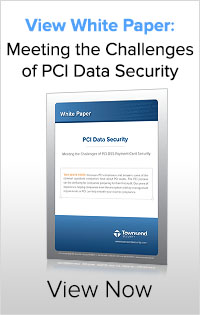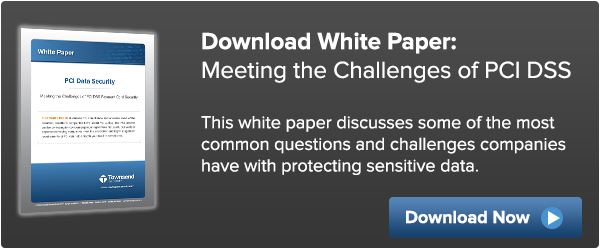Securing data with encryption and protecting the encryption keys with proper key management is addressed in many compliance regulations and security best practices.
 For Drupal developers who need to protect sensitive data in their (or their clients) content management system (CMS), storing the encryption keys within the Drupal CMS puts that data at risk for a breach. Security best practices and PCI DSS compliance regulations call for sensitive data to be protected with encryption and that data-encrypting keys (DEK) be physically or logically separated from the sensitive data and protected with strong key-encrypting keys (KEK). Depending on what type of information is being stored and what industry guidance your project/company falls under, compliance regulations in addition to PCI DSS may apply.
For Drupal developers who need to protect sensitive data in their (or their clients) content management system (CMS), storing the encryption keys within the Drupal CMS puts that data at risk for a breach. Security best practices and PCI DSS compliance regulations call for sensitive data to be protected with encryption and that data-encrypting keys (DEK) be physically or logically separated from the sensitive data and protected with strong key-encrypting keys (KEK). Depending on what type of information is being stored and what industry guidance your project/company falls under, compliance regulations in addition to PCI DSS may apply.
For any company that accepts credit card payments, the Payment Card Industry Data Security Standards (PCI DSS) issues 12 requirements that must be met in order to be compliant. It can seem overwhelming at first, but the PCI council that issues PCI DSS also provides detailed reference guides and instructions on each requirement. Let’s take a high level look at all twelve items:
Build and Maintain a Secure Network and Systems
Requirement 1: Install and maintain a firewall configuration to protect cardholder data
Requirement 2: Do Not use vendor-supplied defaults for system passwords and other security parameters
Protect Cardholder Data
Requirement 3: Protect stored cardholder data*
Requirement 4: Encrypt transmission of cardholder data across open, public networks
Maintain a Vulnerability Management Program
Requirement 5: Protect all systems against malware and regularly update anti-virus software or programs
Requirement 6: Develop and maintain secure systems and applications
Implement Strong Access Control Measures
Requirement 7: Restrict access to cardholder data by business need-to-know
Requirement 8: Identify and authenticate access to system components
Requirement 9: Restrict physical access to cardholder data
Regularly Monitor and Test Networks
Requirement 10: Track and monitor all access to network resources and cardholder data
Requirement 11: Regularly test security systems and processes
Maintain an Information Security Policy
Requirement 12: Maintain a policy that address information security for all personnel
Within the latest documentation by the PCI Security Standards Council (v3.0 released November 2013) specific testing procedures and guidance is given for Requirement 3 on pages 34-43. The PCI Security Standards Council (PCI SSC) website contains this documentation along with a number of additional resources to assist organizations with their PCI DSS assessments and validations. PCI SSC also issues Cloud Computing Guidelines and additional information around virtualization of data protection solutions so you can be PCI compliant with a cloud-based solution for encryption and key management.
Requirement 3 addresses the need for encryption and key management, stating:

“Protection methods such as encryption, truncation, masking, and hashing are critical components of cardholder data protection. If an intruder circumvents other security controls and gains access to encrypted data, without the proper cryptographic keys, the data is unreadable and unusable to that person. Other effective methods of protecting stored data should also be considered as potential risk mitigation opportunities. For example, methods for minimizing risk include not storing cardholder data unless absolutely necessary, truncating cardholder data if full PAN is not needed, and not sending unprotected PANs using end-user messaging technologies, such as e-mail and instant messaging.”
In order to address PCI DSS Requirement 3: Protect stored cardholder data; the security experts at Townsend Security partnered with Chris Teitzel, CEO of Cellar Door Media and Drupal developer to create Key Connection for Drupal in connection with the existing Drupal Encrypt module. In order to provide secure key storage and retrieval options, Key Connection for Drupal provides a secure key management system (Alliance Key Manager) outside of the Drupal installation. Now when cardholder information is collected or stored in a database it can easily be encrypted and the encryption keys properly managed. Key Connection for Drupal allows developers and users to choose whether they need to retrieve a key and encrypt/decrypt locally or to send the data to Alliance Key Manager to perform on board encryption.
Other compliance requirements for protecting information go beyond cardholder data (PCI focuses on PAN or the Primary Account Number specifically) and also require that personally identifiable information (PII) such as names, birthdates, email address, zip codes, usernames, or passwords be protected with encryption and key management. Check back as future blogs will cover additional data privacy compliance regulations and security best practices that impact developers and users of the Drupal CMS open source platform in regards to protected health information (PHI).
For more information on PCI Compliance, download the Whitepaper: "Meet the Challenges of PCI Compliance"

